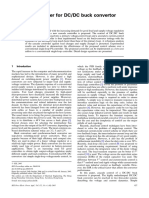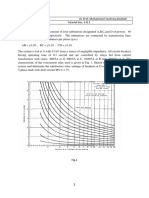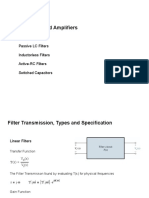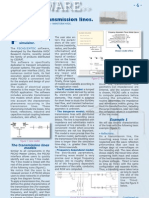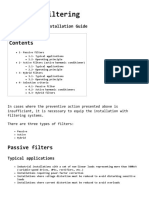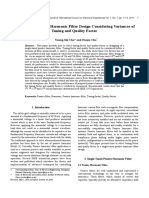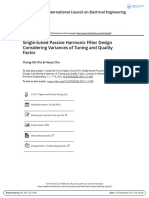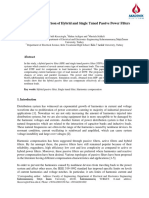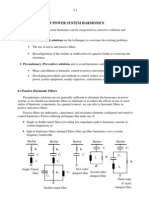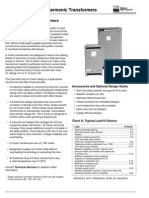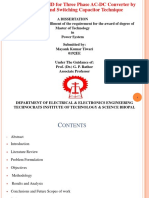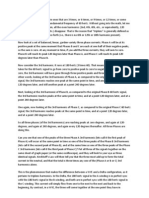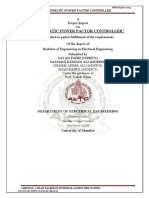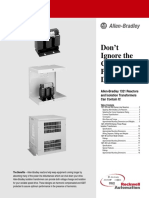0% found this document useful (0 votes)
154 views16 pagesPassive Harmonic Filters Explained
A passive harmonic filter is used to reduce harmonic distortion in power systems caused by nonlinear loads. It works by providing a path for harmonic currents to flow, thereby reducing harmonic distortion without an external power source. Common types include single tuned and double tuned filters that use LC circuits tuned to attenuate specific harmonics while allowing the fundamental frequency to pass through. Passive harmonic filters are commonly used in industrial and commercial settings to prevent equipment issues caused by harmonic distortion.
Uploaded by
2169 EE Rohan jadhavCopyright
© © All Rights Reserved
We take content rights seriously. If you suspect this is your content, claim it here.
Available Formats
Download as DOCX, PDF, TXT or read online on Scribd
0% found this document useful (0 votes)
154 views16 pagesPassive Harmonic Filters Explained
A passive harmonic filter is used to reduce harmonic distortion in power systems caused by nonlinear loads. It works by providing a path for harmonic currents to flow, thereby reducing harmonic distortion without an external power source. Common types include single tuned and double tuned filters that use LC circuits tuned to attenuate specific harmonics while allowing the fundamental frequency to pass through. Passive harmonic filters are commonly used in industrial and commercial settings to prevent equipment issues caused by harmonic distortion.
Uploaded by
2169 EE Rohan jadhavCopyright
© © All Rights Reserved
We take content rights seriously. If you suspect this is your content, claim it here.
Available Formats
Download as DOCX, PDF, TXT or read online on Scribd
/ 16













